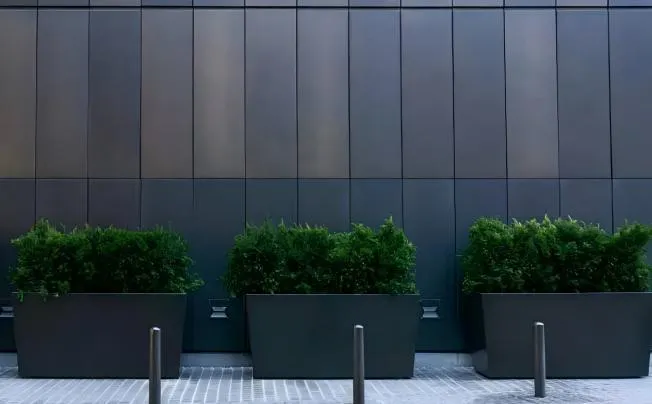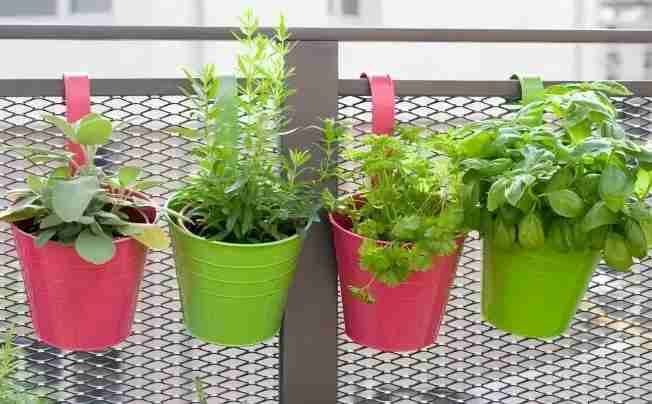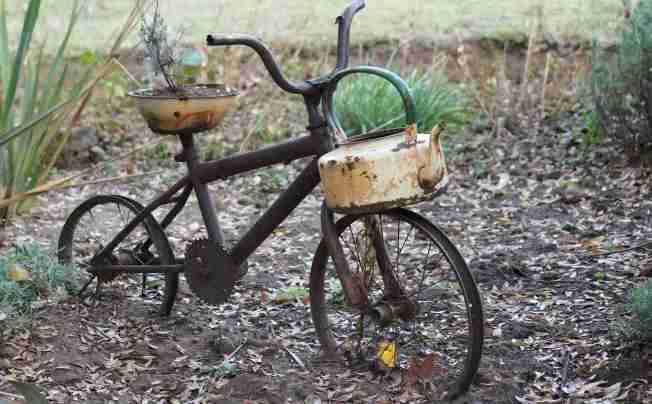Can You Plant Directly Into Metal Planters?
Have you ever stopped in front of a shelf filled with flower pots, letting your fingers gently slide over the rustic clay pots, simple plastic pots, and finally resting on the metal pots with a unique luster?
Advantages of direct planting
Distinct look and ornamental impact
Because of their distinctive look, metal flower pots are a unique addition to gardening décor. Large metal flower boxes are frequently used to create unusual landscape shapes in garden landscapes. To create a garden environment with a sense of hierarchy and art, they can be shaped into a variety of geometric shapes, such as triangles, diamonds, etc., and matched with the nearby flowers, plants, and trees.
Benefits of space utilisation and convenience
Metal flower pots, particularly those made of aluminium alloy, are very light in weight, making them easy to transport. Metal flower pots come in a variety of shapes to accommodate different locations and maximise available space. Hanging metal flower pots can utilise vertical space by hanging on indoor walls and balcony railings and growing hanging plants like spider and ivy so that green spreads from the air, creating a unique look. Slender metal flower pots can be used along the windowsill to plant some small herbs, like mint and basil, which don't take up much room and can add a touch of green and fresh fragrance to the kitchen windowsill.

Issues with temperature regulation and their fixes
The issues with metal flower pots' ability to regulate temperature are particularly noticeable in the summer. Without any protection, the metal flower pot's surface temperature can quickly climb to above 50°C when the sun shines directly on it. The roots of plants will be exposed to a difficult environment of high temperatures and water scarcity as a result of the soil's water rapidly evaporating due to the excessively high temperature that is conveyed to them. The main strategy to address this issue is shading. To lessen direct sunlight and lower the flower pot's surface temperature, you might construct a sunshade net over it and set it beneath large trees, beneath eaves, and in other shady spots. Covering the metal flower pot with a larger clay or plastic pot is another way to employ the technique. The middle layer of air can slow down heat transfer and act as a kind of heat insulation.
The soil temperature in the flower pot will swiftly decrease in the winter due to the metal's thermal conductivity. The soil may freeze when the outside temperature drops below 0°C, harming or even killing plant roots. To prevent heat loss, cover the metal flower pot's surface with a thick layer of insulating material, such as felt, foam board, etc. Transfer the flower pot indoors to a warm location, or place it inside a basic insulation shed that has been set up on the balcony and other locations. Use materials like plastic film to keep the shed's temperature stable.
Metal corrosion hazards and mitigation strategies
Metal flower pots will eventually experience corrosion issues because they are exposed to soil and water for an extended period of time. The water in the soil is in an electrolyte solution and contains a variety of minerals and trace elements. Metals are vulnerable to electrochemical reactions in this setting. Iron flower pots made of metal will corrode more quickly when they come into contact with acidic soil because the metal will react with the acidic chemicals in the soil. Metal corrosion has an adverse effect on plant growth in addition to reducing the flower pot's aesthetic appeal and lifespan.
The pH and chemical makeup of the soil can be altered by the metal ions created by corrosion, which can also have an impact on how well plants absorb nutrients. For certain plants, too many iron ions can be harmful and prevent them from growing normally.
When selecting metal flower pots, you can prioritise metals like stainless steel and aluminium alloy that have high corrosion resistance to avoid metal corrosion. Metal flower pots should be treated to prevent rust before use. One way to do this is to apply anti-rust paint to the surface, which creates a protective layer that keeps oxygen and moisture from coming into direct contact with the metal. Another option is to cover the flower pot with plastic film to keep the soil and metal apart and prevent the soil from corroding the metal. In order to successfully limit the risk of metal corrosion, it is important to maintain the flower pot's surface dry, prevent water buildup, and promptly wipe any dirt or debris from the surface.

Adaptation suggestions for different plants
The performance of drought-tolerant plants in metal flower pots
The thick leaves and stems of succulents store a lot of water, and the air permeability of metal flower pots is average, but since drought-tolerant plants themselves don't need as much oxygen as other plants, it won't have much of an effect on their growth. The roots of cacti can grow healthily in a relatively dry soil environment in metal flower pots, reducing the risk of root rot caused by excessive soil moisture.
Be mindful of the light source when tending to them. To make their leaves broader and their colours more vibrant, place them on a windowsill or balcony that faces south. Make sure they receive 6 to 8 hours of light each day. In order to prevent frequent watering, the frequency of watering should also be closely regulated, adhering to the "dry thoroughly watering" approach.
Planting moisture-loving plants: obstacles and solutions
Plants that need moisture, like green radish and mint, will have some difficulties when they come into contact with metal flower pots. Because mint grows quickly and requires a lot of water and air humidity, the soil must always be maintained moist. It is challenging to provide mint with the water it requires because of the quick evaporation of water in metal flower pots, which causes the soil to dry out quickly. Additionally, green radish prefers a humid climate. Metal flower pots have a low air permeability.
Planting moisture-loving plants: obstacles and solutions
Plants that need moisture, like green radish and mint, will have some difficulties when they come into contact with metal flower pots. Because mint grows quickly and requires a lot of water and air humidity, the soil must always be maintained moist. It is challenging to provide mint with the water it requires because of the quick evaporation of water in metal flower pots, which causes the soil to dry out quickly. Additionally, green radish prefers a humid climate. Metal flower pots have a low air permeability.
An excessive amount of water makes it difficult for the water in the soil to drain, which can quickly result in root rot and hypoxia. To address these issues, when planting mint, you can use water evaporation to raise the humidity of the surrounding air by placing a tray of water next to the flower container. Additionally, you can utilise soil that retains water well, for example, by adding a suitable quantity of coconut bran to the soil to increase its water-retention ability. The soil moisture should be checked daily and the frequency of watering should be suitably increased. To keep the soil consistently moist, water it as soon as the surface is discovered to be dry. To compensate for the issue of metal flower pots' inadequate moisture retention, you can water the green radish leaves frequently in addition to adding a drainage layer to the bottom of the flower pot to improve the drainage capacity. To prevent water buildup, you should regulate the watering schedule. To let the water slowly seep into the soil, you can water using the "small amount and multiple times" strategy.

Selected Blogs
-
What customization services are available for metalworking customization?
2024-12-12
-
What Is The Difference Between A Plant Container And A Raised Bed?
2024-04-23
-
Garden Screening & Fence Panels
2024-04-23
-
Gardening pot selection tips
2024-04-17
-
The function and collocation of horticultural fire pot
2024-04-17


